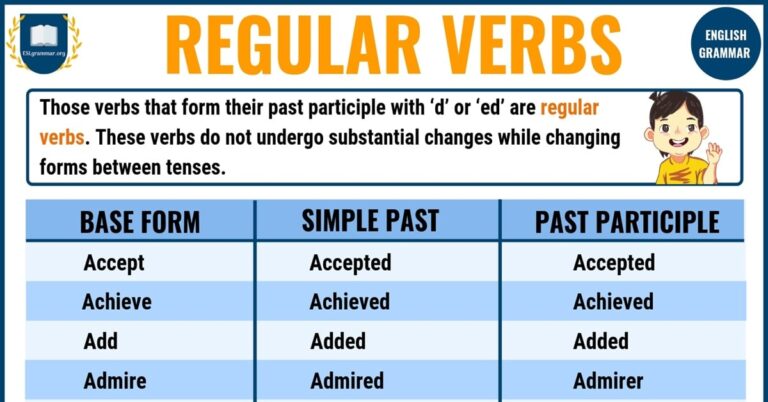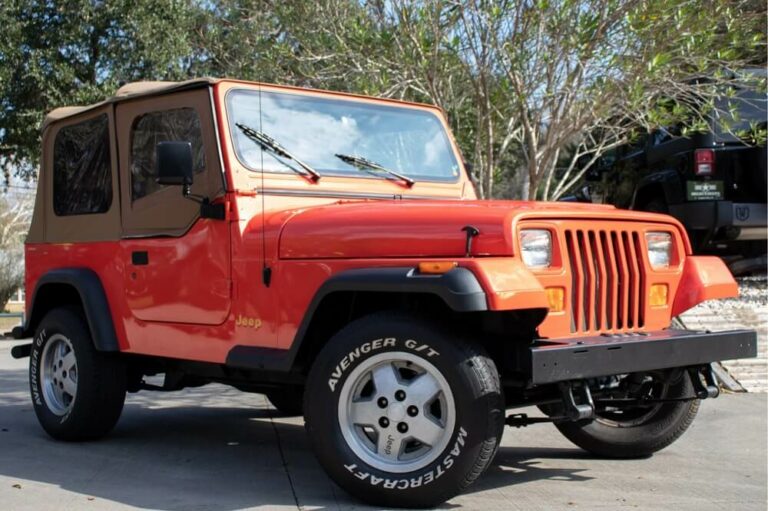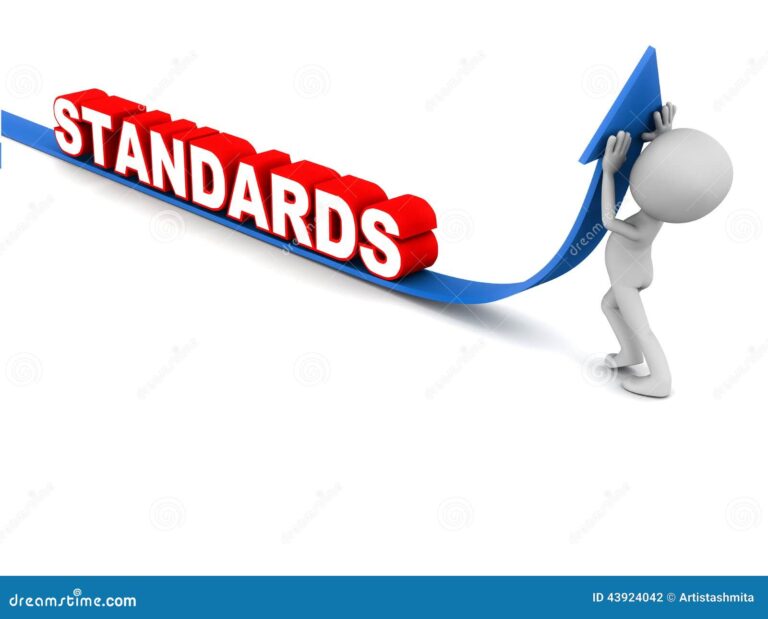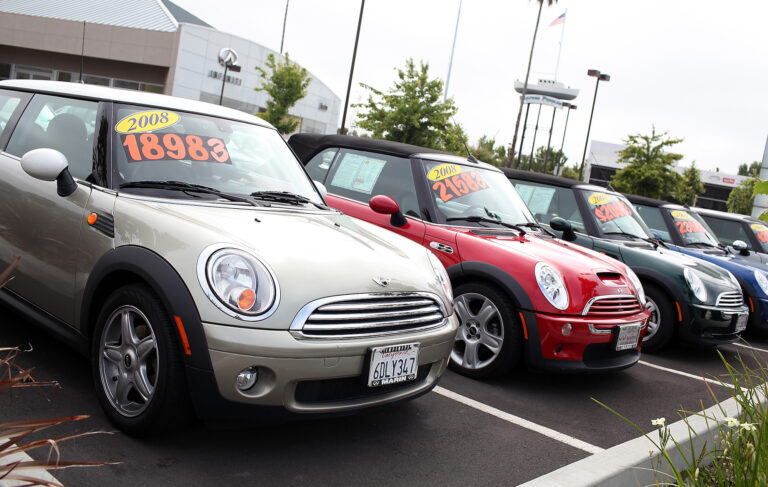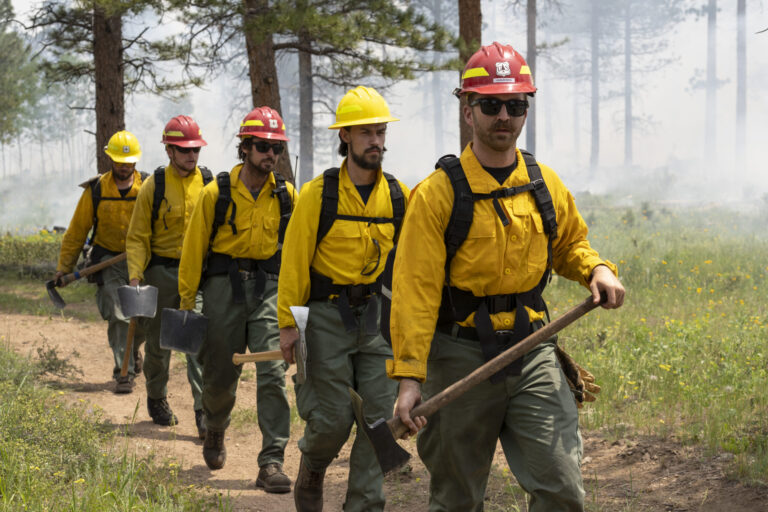68 Chevy Trucks For Sale: A Comprehensive Guide to Finding Your Classic Dream
68 Chevy Trucks For Sale: A Comprehensive Guide to Finding Your Classic Dream cars.truckstrend.com
The year 1968 holds a special place in the hearts of classic truck enthusiasts. It was a pivotal year for Chevrolet’s C/K series, representing the second generation of their immensely popular light-duty pickups. With their timeless styling, robust mechanics, and remarkable versatility, 1968 Chevy trucks have cemented their status as highly sought-after classics. Whether you’re a seasoned collector, a first-time classic buyer, or a custom builder looking for the perfect foundation, navigating the market for 68 Chevy Trucks For Sale requires insight, patience, and a keen eye. This comprehensive guide will equip you with the knowledge needed to find, evaluate, and acquire your ideal vintage Chevrolet pickup.
Why the 1968 Chevy Truck Stands Out
68 Chevy Trucks For Sale: A Comprehensive Guide to Finding Your Classic Dream
The 1968 Chevrolet C/K series, often affectionately known as the "Action Line" or "Glamour Pickups," marked a significant evolution in truck design. Building on the success of the 1967 redesign, the ’68 model introduced subtle yet important refinements that enhanced its appeal. Its clean lines, wide stance, and comfortable interior set it apart from its predecessors and competitors. From a mechanical standpoint, these trucks were built tough, capable of handling daily work while also providing a surprisingly smooth ride thanks to their coil-spring rear suspension (on 2WD models).
Beyond their aesthetic and mechanical prowess, 1968 Chevy trucks carry a strong sense of nostalgia and Americana. They represent an era of straightforward utility blended with burgeoning style. This blend makes them incredibly versatile: they can be restored to concourse originality, transformed into high-performance restomods, or simply enjoyed as dependable daily drivers. Their enduring popularity ensures a healthy aftermarket for parts and a vibrant community of owners and builders, making them an excellent choice for anyone looking to invest in a classic vehicle.
Understanding the 1968 Chevy C/K Series
Before diving into the market, it’s crucial to understand the different configurations and options available for 1968 Chevy trucks. This knowledge will help you identify what you’re looking for and evaluate listings accurately.
- C-Series (2WD) vs. K-Series (4WD): The "C" denotes a two-wheel-drive truck, while "K" signifies a four-wheel-drive model. C-series trucks are generally more common, often come with coil-spring rear suspension for a smoother ride, and are popular for street builds. K-series trucks, with their leaf spring suspension and rugged drivetrain, are sought after for off-road use or for those who appreciate their go-anywhere capability.
- Body Styles:
- Fleetside: The most popular and recognizable style, featuring smooth, flush bedsides.
- Stepside: Characterized by separate rear fenders and external steps, offering a more traditional, utilitarian look.
- Suburban: While technically an SUV, the ’68 Suburban shares the C/K platform and many components, offering more passenger and cargo space.
- Panel Truck: A windowless version of the Suburban, used for commercial purposes, now rare and highly collectible.
- Crew Cab: Extremely rare factory-produced four-door versions were available, primarily for commercial or utility use. Most "crew cabs" you see are custom builds.


- Engine Options: A wide range of engines powered these trucks:
- Inline-6: 250 cubic inch and 292 cubic inch options provided reliable, torquey power.
- Small Block V8: The 283, 307, and 327 cubic inch V8s were popular choices, offering good performance and easy maintenance.
- Big Block V8: The powerful 396 cubic inch V8 (often badged as 402 later) was available, making these trucks true muscle machines.

- Transmissions: Manual transmissions (3-speed or 4-speed) and automatic transmissions (Turbo Hydra-Matic 350 or 400) were offered.
Key features specific to the 1968 model year include the mandated side marker lights (front amber, rear red), a slightly revised grille from ’67, and specific interior trim options.
Where to Find 68 Chevy Trucks For Sale
The digital age has made finding classic vehicles easier than ever, but knowing where to look is key to success.
- Online Marketplaces & Auction Sites:
- ClassicCars.com, Hemmings.com, AutoTrader Classics: Dedicated classic car marketplaces often feature a wide selection of ’68 Chevy trucks from dealers and private sellers.
- eBay Motors: A vast inventory, ranging from project trucks to fully restored examples. Be wary of descriptions and always ask for more details.
- Bring a Trailer (BaT): Known for curated, higher-quality listings with extensive photo galleries and active comment sections. Prices here tend to be higher.
- Facebook Marketplace & Specialty Groups: Many classic truck groups on Facebook are active communities where members buy, sell, and trade.
- Specialized Classic Truck Dealers: These dealerships focus specifically on vintage trucks, often offering vehicles that have undergone some level of reconditioning. They typically come with higher prices but also potentially more peace of mind.
- Local Classifieds & Word-of-Mouth: Don’t underestimate the power of local listings (e.g., Craigslist, local papers) or simply talking to enthusiasts at car shows and swap meets. Sometimes, the best deals are found through personal connections.
- Auctions: Major automotive auctions (Mecum, Barrett-Jackson) occasionally feature high-end restored or customized ’68 Chevy trucks. Local estate or farm auctions might yield hidden gems, but require quick decision-making.
What to Look For When Buying a 1968 Chevy Truck (The Inspection Guide)
Buying a classic truck, especially one over five decades old, requires a thorough inspection. A few hours of careful examination can save you thousands in future repairs.
- Rust is the Enemy: This is the most critical area. Check common rust spots:
- Cab Corners and Rocker Panels: These areas are notorious for rust due to water and dirt accumulation.
- Floor Pans: Under the carpet or mat, especially around the firewall and seat mounts.
- Bed Floor and Supports: Particularly where the wood bed (if original) meets the metal or where debris collects.
- Fenders and Wheel Arches: Especially where tires kick up road grime.
- Frame: Look for cracks, bends, or severe surface rust that could compromise structural integrity. Pay attention to body mounts.
- Engine and Drivetrain:
- Leaks: Look under the truck for oil, transmission fluid, or coolant leaks.
- Smoke: Blue smoke (oil burning) or white smoke (coolant burning) from the exhaust can indicate internal engine issues.
- Noises: Listen for knocking, tapping, or grinding sounds.
- Transmission: Check fluid levels and clarity. During a test drive, ensure smooth shifting without harshness or slipping.
- Suspension and Steering:
- Play in Steering: Excessive play can indicate worn steering box, tie rods, or ball joints.
- Shocks and Springs: Look for worn out or leaking shocks. Test by pushing down on each corner of the truck.
- Tires: Check for uneven wear, which can point to alignment or suspension issues.
- Brakes: Ensure the pedal feels firm and the truck stops straight without pulling. Check brake lines for corrosion.
- Electrical System: Test all lights (headlights, tail lights, turn signals, brake lights), wipers, horn, radio, and gauges. Look for frayed or aftermarket wiring.
- Interior: Assess the condition of the dash pad (prone to cracking), seats, door panels, and headliner. Originality is a plus, but reproduction parts are available.
- Documentation: Always verify the VIN (Vehicle Identification Number) on the title matches the VIN plate on the truck (typically on the driver’s door jamb and frame rail). Ask for any maintenance records.
- Originality vs. Restomod: Decide what you prefer. A highly original truck may command a premium, while a restomod offers modern comforts and performance. Both have their appeal.
Practical Advice: If possible, always inspect the truck in person. Bring a knowledgeable friend or hire a pre-purchase inspection service, especially for out-of-state purchases.
Budgeting for Your 1968 Chevy Truck
The price of a 1968 Chevy truck can vary wildly depending on its condition, rarity of specific configurations, and level of restoration.
- Project Truck ($5,000 – $15,000+): These trucks require significant work, often including rust repair, engine overhaul, and interior refurbishment. They are suitable for those with skills, time, and a healthy budget for parts.
- Driver Quality ($15,000 – $30,000): These are runnable and presentable trucks that might have some cosmetic flaws or minor mechanical needs but are generally safe to drive.
- Good Restored ($30,000 – $55,000+): These vehicles have undergone professional restoration, featuring new paint, refreshed interiors, and rebuilt mechanicals. They are ready to show or cruise.
- Show Quality / Restomod ($55,000 – $100,000+): At the top end, these trucks are either meticulously restored to original factory specifications or extensively customized with modern powertrains, suspension, and luxury interiors. Prices can exceed $100,000 for truly exceptional builds.
Hidden Costs: Remember to factor in additional expenses:
- Transportation: Shipping a truck across states can be costly.
- Registration and Insurance: Classic car insurance is often more affordable than modern car insurance, but still a cost.
- Immediate Repairs/Maintenance: Even a "driver" will likely need some immediate attention (fluids, tune-up, tires).
- Parts: While readily available, costs can add up quickly, especially for sheet metal or specialized components.
Challenges and Solutions
While owning a classic is rewarding, be prepared for potential challenges.
- Rust Repair: This is often the biggest hurdle. Solution: Identify rust early, learn basic welding, or budget for professional body shop work. Reproduction sheet metal is widely available.
- Parts Availability: Generally excellent for C/K trucks, but quality can vary. Solution: Research reputable suppliers (e.g., LMC Truck, Classic Industries, Brothers Trucks) and read reviews.
- Mechanical Issues: Older vehicles will inevitably have wear and tear. Solution: Learn basic mechanics, find a trusted local mechanic experienced with vintage vehicles, or consider upgrading components (e.g., disc brakes, modern ignition).
- Authenticity Concerns: Verifying original components or mileage can be tricky. Solution: Consult expert forums, utilize VIN decoders, and cross-reference casting numbers where possible.
- Financing: Traditional banks may be hesitant to finance older vehicles. Solution: Look into specialized classic car loan providers.
Tips for a Successful Purchase
- Define Your Goal: Are you looking for a daily driver, a show truck, a custom project, or an investment? This will narrow your search and budget.
- Do Your Homework: Research common issues, fair market values, and reputable sellers.
- Inspect Thoroughly: As detailed above, don’t skip steps.
- Negotiate: Most classic vehicle prices are negotiable. Be prepared to walk away if the deal isn’t right.
- Get a Clear Ensure the seller has a clean, transferable title in their name. Avoid vehicles with salvage titles or no title.
- Factor in Transportation: Don’t forget the cost of getting the truck home if buying out of state.
68 Chevy Trucks For Sale: Estimated Price Guide (USD)
This table provides a general range for 1968 Chevy trucks based on common body styles and conditions. Prices can vary significantly based on engine, transmission, options, location, and market demand.
| Condition Category | Body Style / Drivetrain | Typical Price Range (USD) | Notes |
|---|---|---|---|
| Project Truck | C10 Short Bed Fleetside (2WD) | $5,000 – $12,000 | Requires extensive work (body, paint, engine, interior). Often incomplete or non-running. |
| C10 Long Bed Fleetside (2WD) | $4,000 – $10,000 | More common, slightly lower value than short beds in project form. | |
| C10 Stepside (2WD) | $6,000 – $13,000 | Unique styling, often commands a bit more. | |
| K10 4×4 (Short/Long Bed) | $7,000 – $15,000+ | 4×4 models are inherently more complex and rarer, even as projects. | |
| Driver Quality | C10 Short Bed Fleetside (2WD) | $18,000 – $30,000 | Runs, drives, stops. Presentable paint, solid body with minor flaws. May need mechanical refresh or cosmetic touch-ups. |
| C10 Long Bed Fleetside (2WD) | $15,000 – $25,000 | Good for everyday cruising or light work. | |
| C10 Stepside (2WD) | $20,000 – $35,000 | Desirable look, often well-maintained. | |
| K10 4×4 (Short/Long Bed) | $25,000 – $40,000+ | Functional 4×4, often used for light off-roading or as a rugged classic. | |
| Good Restored | C10 Short Bed Fleetside (2WD) | $35,000 – $55,000 | Fresh paint, rebuilt engine/drivetrain, clean interior. Ready for shows or reliable cruising. |
| C10 Long Bed Fleetside (2WD) | $30,000 – $45,000 | Well-executed restoration, strong mechanicals. | |
| C10 Stepside (2WD) | $38,000 – $60,000+ | High-quality restoration of a visually distinctive truck. | |
| K10 4×4 (Short/Long Bed) | $45,000 – $70,000+ | Comprehensive restoration, often including chassis and drivetrain. | |
| Show Quality / Restomod | C10 Short Bed Fleetside (2WD) | $60,000 – $100,000+ | Flawless paint, custom interior, modern engine (LS swap common), upgraded suspension/brakes. Built for high performance or concourse shows. Prices can exceed $150k for top builds. |
| K10 4×4 (Short/Long Bed) | $70,000 – $120,000+ | High-end builds with modern amenities, often with lifted suspension and custom features. | |
| Rare Configurations | Suburban / Panel Truck / Crew Cab | Varies widely ($20k-$150k+) | These are much rarer and their value depends heavily on condition, originality, and the specific market. Crew Cabs are almost exclusively custom builds. |
Note: These are estimates. Market conditions, specific engine/transmission, original options (e.g., A/C, power steering/brakes), and the quality of restoration or customization will heavily influence the final price.
Frequently Asked Questions (FAQ)
Q: What’s the main difference between a C10 and a K10?
A: A C10 is a two-wheel-drive (2WD) truck, while a K10 is a four-wheel-drive (4WD) truck. C10s typically have a smoother ride due to their coil-spring rear suspension, while K10s are built for rugged terrain with leaf springs all around.
Q: Are parts for 1968 Chevy trucks easy to find?
A: Yes, parts availability is excellent. Due to the popularity of the C/K series, numerous aftermarket manufacturers produce everything from body panels and trim to engine and suspension components.
Q: Can I daily drive a 1968 Chevy truck?
A: Absolutely! Many enthusiasts use their ’68 Chevy trucks as daily drivers. However, be aware that they lack modern safety features (airbags, ABS) and may require more frequent maintenance than a new vehicle. Upgrades like disc brakes, power steering, and fuel injection can enhance daily drivability.
Q: What are the most common rust spots to check?
A: The most common areas are cab corners, rocker panels, floor pans, lower fenders, and the bed floor. Always inspect the frame thoroughly for rust or damage as well.
Q: How do I verify the VIN on a 1968 Chevy truck?
A: The VIN plate is typically located on the driver’s side door jamb and stamped on the top of the frame rail, usually near the driver’s side front wheel. Ensure these match the vehicle’s title. VIN decoders can help you understand the original factory specifications.
Q: What’s a "restomod"?
A: A "restomod" is a classic vehicle that has been restored cosmetically but upgraded with modern mechanical components. For a 1968 Chevy truck, this often means an LS engine swap, modern independent front suspension, disc brakes, air conditioning, and a custom interior.
Conclusion
The allure of 68 Chevy Trucks For Sale remains as strong as ever, offering a unique blend of vintage charm, rugged utility, and customization potential. Whether you envision a perfectly restored showpiece, a reliable weekend cruiser, or a high-performance custom build, the 1968 C/K series provides an excellent foundation. By understanding the different models, knowing where to search, and conducting thorough inspections, you can confidently navigate the market. Owning a 1968 Chevy truck is more than just possessing a vehicle; it’s an investment in a piece of automotive history, a gateway to a passionate community, and a source of undeniable driving pleasure. With the right approach, your classic dream truck is well within reach.

